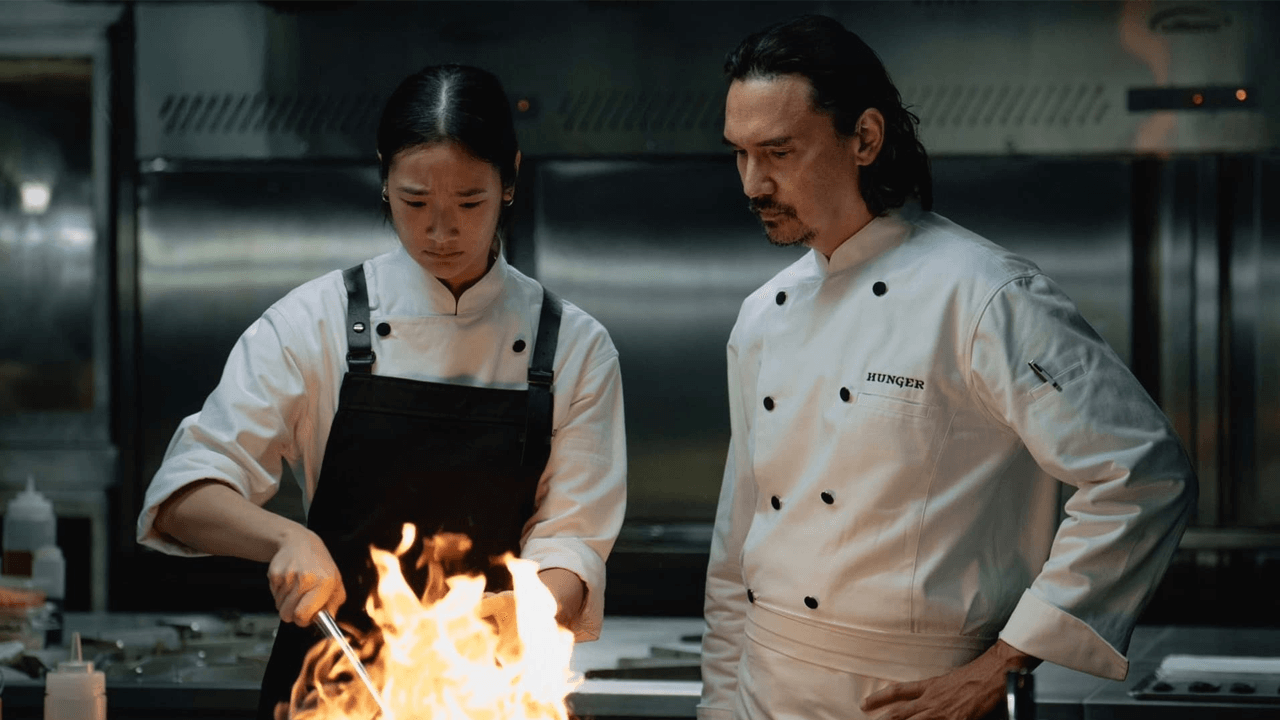When it comes to fine dining and the flashy spectacles within the world of “Hunger,” it’s a bigger message on socio-economic class and the whole discrepancy that comes with being associated as a “big-time chef.” The tortured artist film was released on Apr 8th to Netflix. The movie follows our protagonist Aoy, played by Chutimon Chuengcharoensukying, who works at a family-owned noodle shop in Thailand and gets recruited by one of the most prestigious chefs in the world, Chef Paul, played by Nopachai Chaiyanam. After she passes try outs, she quickly learns in the advanced world of haute cuisine there is no such thing as an easy task. Chef Paul quickly educates her that in the pursuit to be special, there must also be a hunger to be perfect.
The way class depictions are present throughout this film is prevalent in the artistic manner in which the dishes are created.The slow motion shots on the dishes cooking to the consumption of the food by the patrons further illustrate the patron’s place upon the socio-economic scale. Throughout the themed events the chefs cook at, the dining experience is captivating.
However, the unspoken harsh reality of being a well-known chef are the secret plots that discredit and tarnish their name, due to the mistreatment of their fellow workers.
The dialogue between Aoy and Chef Paul highlights the different worlds they come from. Aoy is enthusiastic to be seen and noticed by her superior while Chef Paul still regards her as just a common chef who is disillusioned by her poor upbringing. Another thing to note about the dialogue is the way that almost every side character who speaks has the relatability of how their lines are delivered in regards to life and this concept of being remembered or regarded as somebody towards audiences. The older people in the upper class of society hire for the experience. In contrast, the younger generation just uses it as an excuse to brag to others about the fact that they had them in attendance. Despite being a part of the most distinguished entourage of chefs, they still fade into obscurity due to the reputation that comes with being the face of the biggest fine dining cuisine in the world.
Although Chef Paul is one of the biggest names in fine dining, there is a level of emotional baggage that comes with his upbringing and motivation to be one of the most revered chefs in the world.Throughout the film, there is an emphasis on the characters’ backgrounds and its influence on emotional connection.
The continued drive to become the best versions of themselves is continuously reinforced with music adding to the tension, the slowed-down effects during cooking scenes and the social commentary of the dialogue being spoken. These elements bear a giant load of weight, exploring overarching themes of this class discrepancy and flamboyant performances that come with being a part of serving the top 1%. The lengths to which their paths to success go are very extreme in some cases and there are questionable moments in which their morals and ambitions get mixed up.
Overall, “Hunger” is a good deep dive into the conversation about losing one’s self in the driving passion and desire for success, by any means necessary. The commentary on class through the lenses of the upper class, with Chef Paul in contrast to Aoy’s humble beginnings at a local family-owned restaurant, is what kept audiences on the edge of their seats wondering how far these chefs were willing to go to establish themselves in a higher scale of power to their successful careers. In a somewhat critical manner, the way the food’s preparation and consumption is achieved is very ironic in the sense that it feels rather animalistic and still rings true to this socio-economic class discrepancy that’s prevalent in today’s society.
Verdict: The drive and ambition that leads to one’s hunger for power and success is the driving force behind how fast-paced “Hunger” is. The depiction of class in this film is an entertaining watch in which audiences can relate to its characters.








